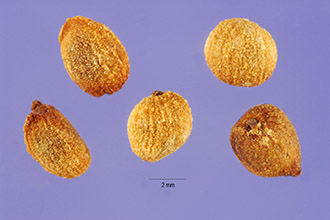
|
Reproduction in calla lilies is very similar to many other flowers. First of all, Zantedeschia aethiopica is not capable of self fertilizing, it requires two different plants to form a viable offspring. The female part of the plant is the ovary and the male contribution is the anthers. On average in the calla lily there are 15 anthers for every one ovary. On each spadix there is 40-100 ovaries and 400-1500 anthers. On the spadix the lower section contains the female flowers and the upper region is covered by a mass of stamens. Seeds of Zantedeschia aethiopica The Process to produce fruits can easily be summed up in six steps: Pre-Female Phase- In this phase the spathe emerges and is tightly rolled. The phase averages three days and at the end of it the spathe becomes visible. At this point the plant is immature and cannot reproduce. Female Phase- During this phase the spathe begins the process of unwinding. This process takes six days to complete and at the end of it the anthers are still immature. Male Phase- At this point the spathe is completely opened. The anthers then discharge their pollen simultaneously. The pollen is extruded through the anther pores it can be spread in many ways, the most popular way for the plant to spread pollen is to attach it to the smooth hard back of many insects most commonly the beetle. The pollen is actually extruded in long very fine strands. The stigma secretes a sticky secretion that allows it to attach. After the beetle has had pollen attached to it from one plant the idea is that the beetle will use the spathe of another calla lily for shelter or for a place to trap food and by doing so they accidentally participate in an act of pollination. Fruit Development- This is the part of the process where the fruits (berries) begin to enlarge and when complete they reach a size of aprox. 13 x 10 mm. Other regions of the plant like the spathe and staminodes begin to wither and brown. Fruit Ripening- The fruit ripens from the tip to the base and becomes bright orange. This fruit can then be eaten by animals such as birds and be distributed by these animals. The plant relies on the birds for dispersal.
This page is maintained by Ashley Schulz schultz.ash2@students.uwlax.edu
|

